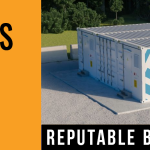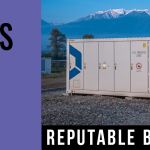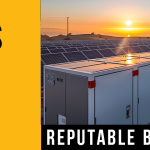 Sembcorp will collaborate with Singapore’s Energy Market Authority (EMA) as part of a pilot programme to support the deployment of energy storage in the country.
Sembcorp will collaborate with Singapore’s Energy Market Authority (EMA) as part of a pilot programme to support the deployment of energy storage in the country.
While working on pilot projects, EMA will also help Sembcorp explore business models for energy storage systems, and facilitate regulatory and market approvals for Sembcorp’s operation of such systems in Singapore.
The initiative, also known as ACCESS (ACCelerating Energy Storage for Singapore), aims to make storage more common in Singapore as it can help counter the intermittency of renewable power sources and enhance the overall stability of the grid. It can also potentially allow consumers to save on their energy bills by storing power for use at peak times.
Sembcorp could use energy storage systems to work alongside its solar power and gas-fired power assets or to provide complete behind-the-meter clean energy solutions for individual electricity consumers.
Sembcorp Group president and CEO Neil McGregor said: “Energy storage is a critically important technology that is gaining momentum globally and will be a game changer especially in the clean energy space. […] We see the inclusion of energy storage systems as a good complement to our growing renewable energy portfolio. We have invested in such systems overseas in the UK, and are now excited to partner with EMA to apply the technology at home in Singapore, where we are one of the largest solar power players.”
Largest single rooftop
Sembcorp has also signed an agreement to build 6.2MW of rooftop solar projects on top of two Singapore facilities owned by a major energy industry service provider, including one of Singapore’s largest rooftop projects, standing at 4.7MW.
Both systems together are expected to produce around 7,435MWh of power annually. The solar farm will help power the on-site operations of the customer, with surplus power channelled to the grid. One of the two locations, located in the Tuas area, is also said to be the largest solar installation on a single rooftop in Singapore to date, with more than 12,700 solar panels amounting to over 4.7MW.

 CARMEL, Ind. — A recent MISO workshop on storage providing transmission services made clear how much the technology is blurring the once clear lines between generation and transmission.
CARMEL, Ind. — A recent MISO workshop on storage providing transmission services made clear how much the technology is blurring the once clear lines between generation and transmission. The microgrid demonstration plant which was completed in November last year provides electricity to 14 households with 81 family members that make up the Wilhelmina community.
The microgrid demonstration plant which was completed in November last year provides electricity to 14 households with 81 family members that make up the Wilhelmina community. Clean tech giant Tesla has delivered its Powerpack battery storage system to a tidal power station off the coast of the Shetland Islands in the UK.
Clean tech giant Tesla has delivered its Powerpack battery storage system to a tidal power station off the coast of the Shetland Islands in the UK. Sembcorp has signed an agreement to build 6.2MW of rooftop solar projects on top of two Singapore facilities owned by a major energy industry service provider, including one of Singapore’s largest rooftop projects, standing at 4.7MW.
Sembcorp has signed an agreement to build 6.2MW of rooftop solar projects on top of two Singapore facilities owned by a major energy industry service provider, including one of Singapore’s largest rooftop projects, standing at 4.7MW. ISO New England, joined by the New England Power Pool (NEPOOL), has filed revisions with the Federal Energy Regulatory Commission (FERC) to codify a new design that would enable batteries and other storage technologies to more fully participate in the New England wholesale electricity markets.
ISO New England, joined by the New England Power Pool (NEPOOL), has filed revisions with the Federal Energy Regulatory Commission (FERC) to codify a new design that would enable batteries and other storage technologies to more fully participate in the New England wholesale electricity markets. The Federal Energy Regulatory Commission has given every grid operator in the country a December deadline for submitting plans for integrating energy storage into capacity, energy and ancillary services markets.
The Federal Energy Regulatory Commission has given every grid operator in the country a December deadline for submitting plans for integrating energy storage into capacity, energy and ancillary services markets.



